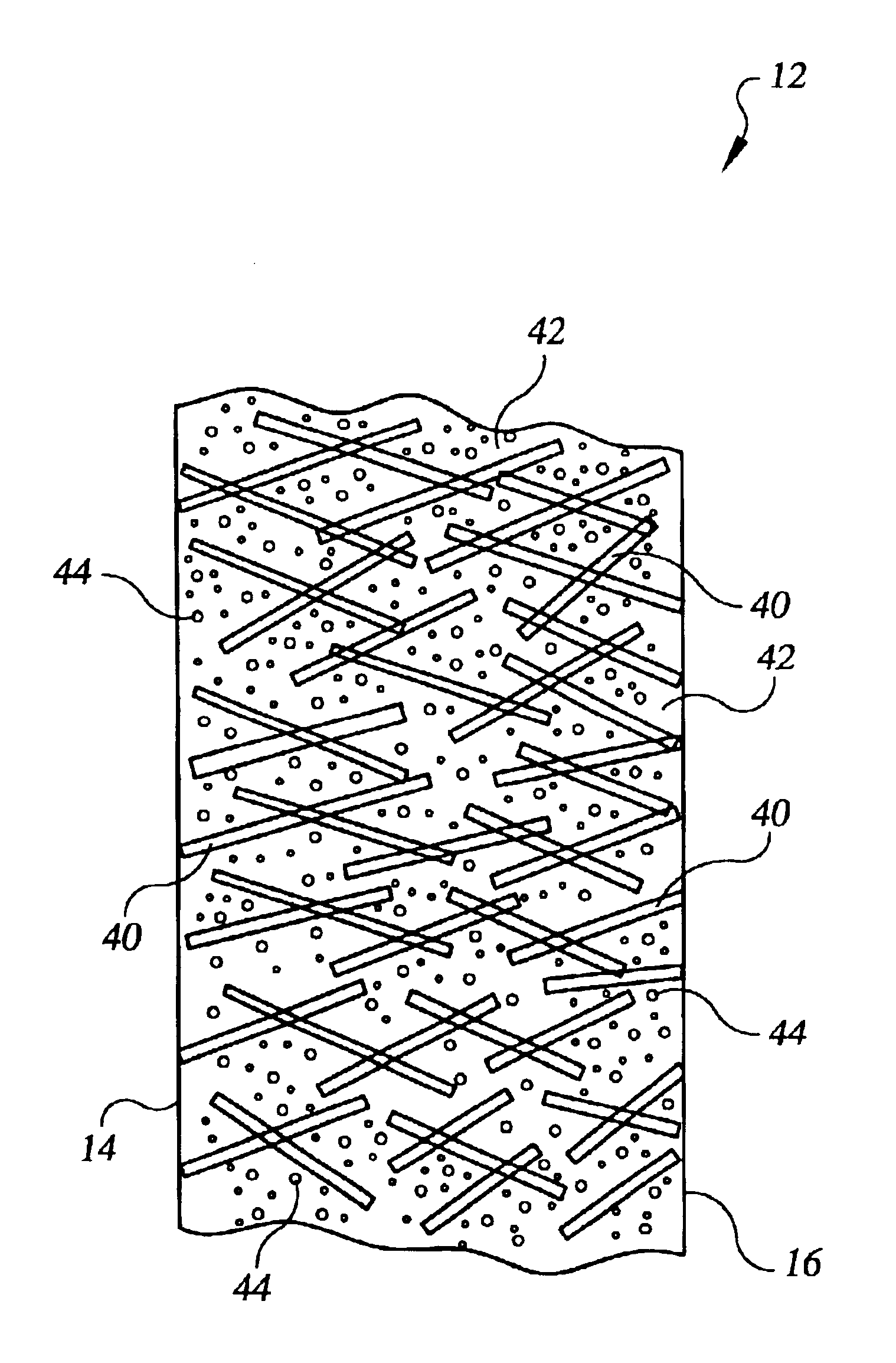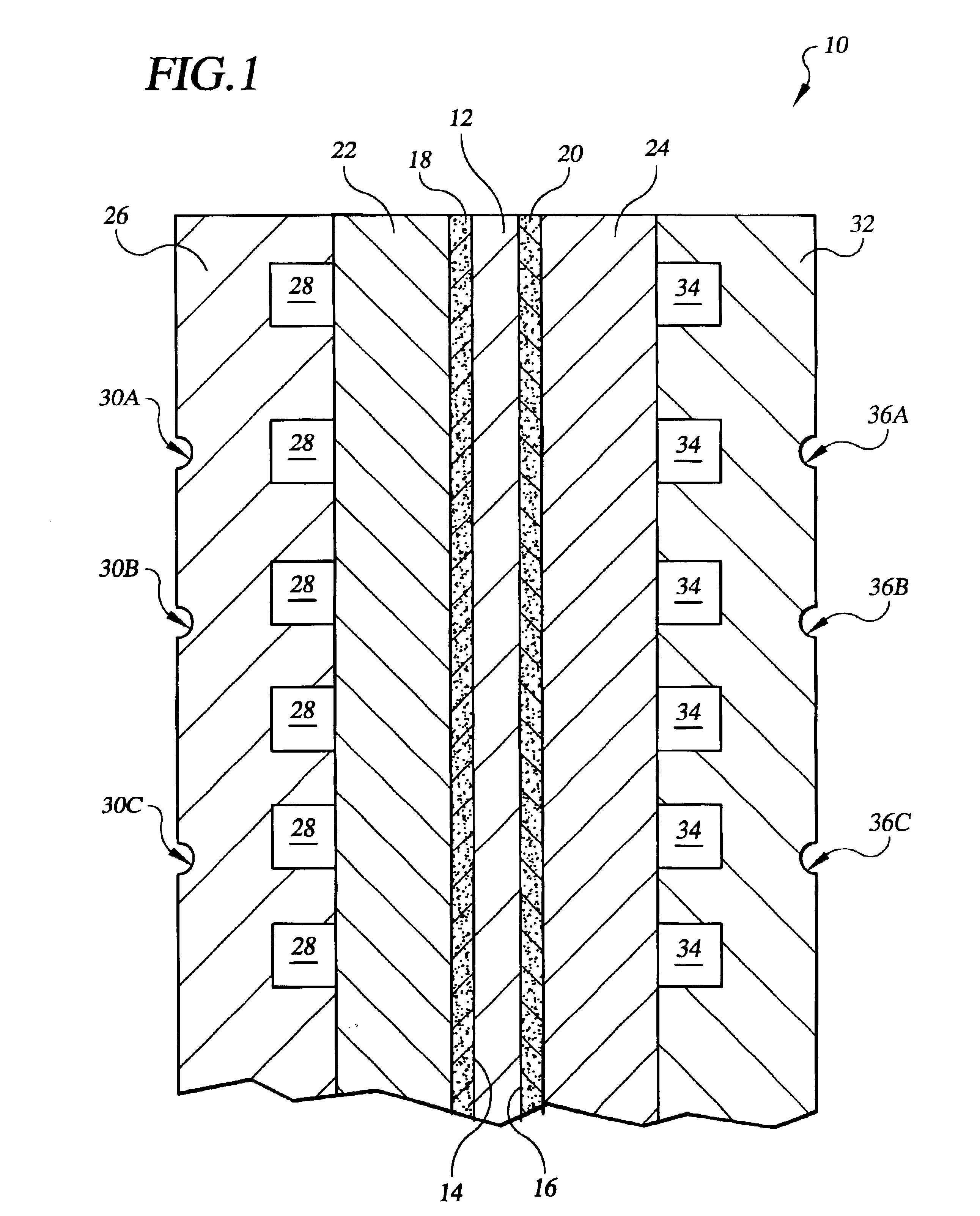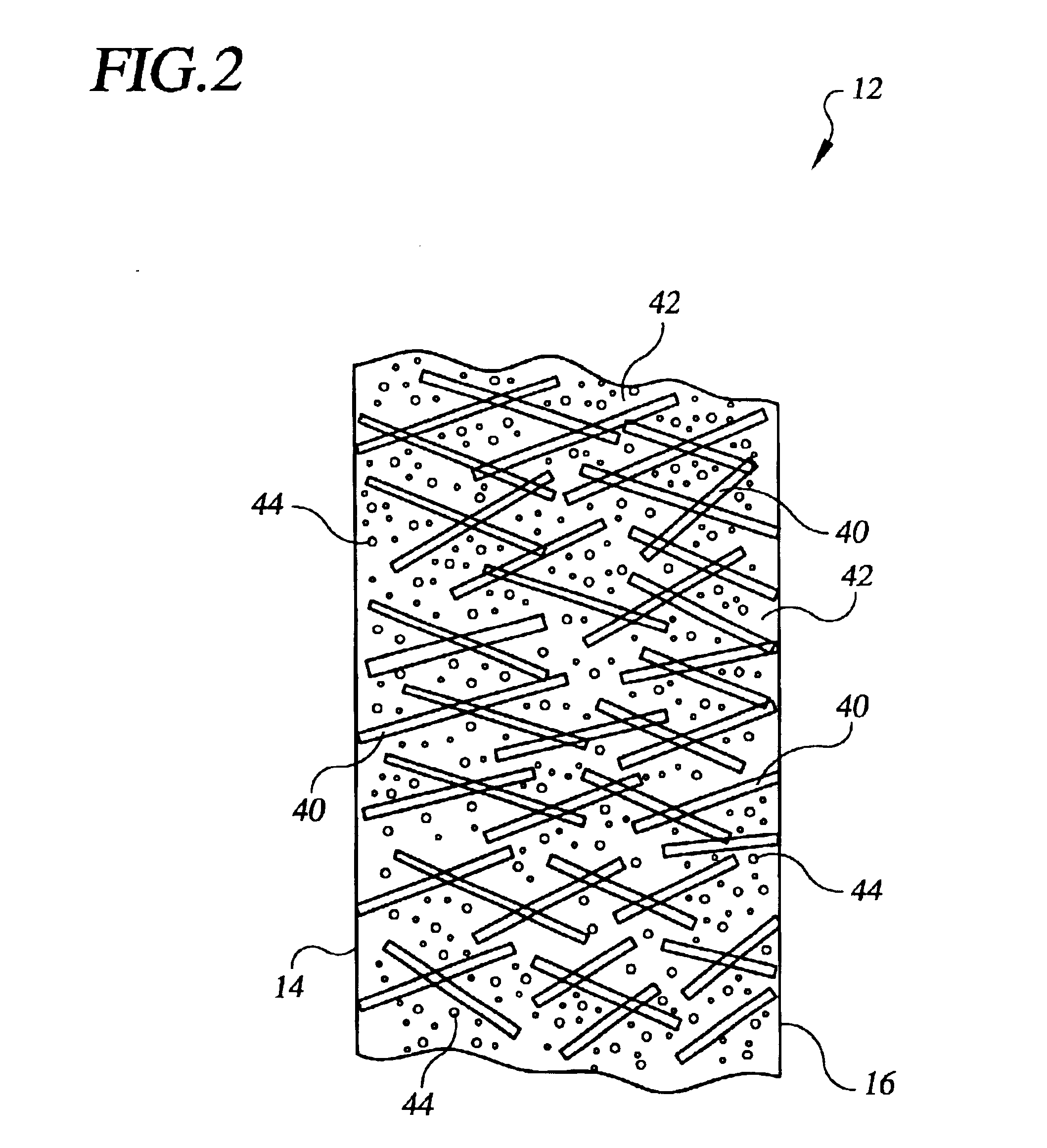High water permeability proton exchange membrane
a proton exchange membrane and high water permeability technology, applied in the field of electrochemical cells, can solve the problems of reactant fluid cross-over, local over heating, and rate drop, and achieve the effect of high water permeability and enhanced water permeability
- Summary
- Abstract
- Description
- Claims
- Application Information
AI Technical Summary
Benefits of technology
Problems solved by technology
Method used
Image
Examples
Embodiment Construction
Referring to the drawings in detail, an electrochemical cell, such as a fuel cell 10 is shown schematically as a working environment for a high water permeability proton exchange membrane (“PEM”) 12. The high water permeability PEM 12 is shown having a first catalyst surface 14 and an opposed second catalyst surface 16. An anode catalyst 18 and a cathode catalyst 20 are supported adjacent to the opposed first and second catalyst surfaces 14, 16 of the PEM 12. A porous anode substrate 22 is secured adjacent to the anode catalyst 18, and a porous cathode substrate 24 is secured adjacent to the cathode catalyst 20. An anode water transport plate 26 is secured adjacent to the anode substrate 22, and the anode water transport plate 26 defines a reducing fluid distribution network 28 and a plurality of anode side water channels 30A, 30B, 30C. A cathode water transport plate 32 is secured adjacent to the cathode substrate 24, and the cathode water transport plate 32 defines a process oxida...
PUM
| Property | Measurement | Unit |
|---|---|---|
| volume percent | aaaaa | aaaaa |
| volume percent | aaaaa | aaaaa |
| diameter | aaaaa | aaaaa |
Abstract
Description
Claims
Application Information
 Login to View More
Login to View More - Generate Ideas
- Intellectual Property
- Life Sciences
- Materials
- Tech Scout
- Unparalleled Data Quality
- Higher Quality Content
- 60% Fewer Hallucinations
Browse by: Latest US Patents, China's latest patents, Technical Efficacy Thesaurus, Application Domain, Technology Topic, Popular Technical Reports.
© 2025 PatSnap. All rights reserved.Legal|Privacy policy|Modern Slavery Act Transparency Statement|Sitemap|About US| Contact US: help@patsnap.com



